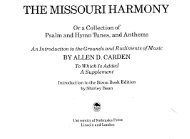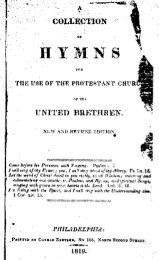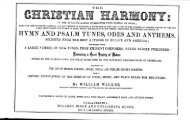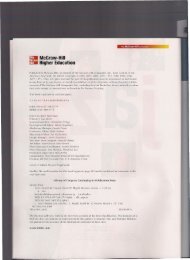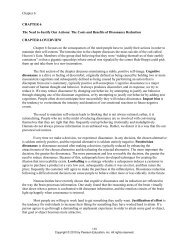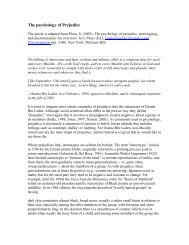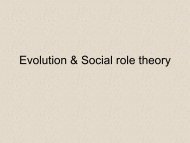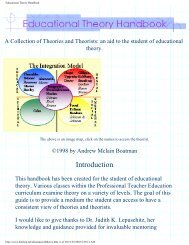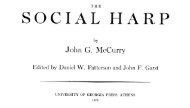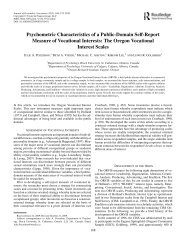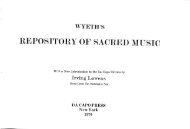Cleavage Structures.pdf
Cleavage Structures.pdf
Cleavage Structures.pdf
Create successful ePaper yourself
Turn your PDF publications into a flip-book with our unique Google optimized e-Paper software.
44 cLEAvAcE srRucruREs, pARTy sysrEMs, AND vorER ALI.NMENT'<br />
Developments qnd Deviations: parties lor Agrarian Delense<br />
we distinguished in our initiar paradigm (Fig. , berween twgi,typical,,<br />
:*l:9,.: ar thi.rlnd or.,h;-i"';io"riii"urtu.a<br />
opposrtron of axis:<br />
ethnic-ringuistic on thd i iide tne<br />
*inorities againri<br />
nationar currure (l), tt"<br />
; ,his_li;;ffiosition "ffiia# #;yf##:<br />
;r ;ilil;;;try against<br />
rT"ril:T[.:"f l]n""""uvtninnan:ct'i;;#;;;;r,"'ii"r#iiii,iur'io6,",t,<br />
a,-**;;*-.# i*mH:'ff.,fm<br />
cleavages o! type 3 in Fig. 3l--- "-" t'""<br />
;;''";fti'il"iil-i'f;l'"org interests are most rikery ro nnd direct<br />
+otitrs4_gllrrssias_ j<br />
'u"@:'l;tii:1$.:".'""Jff "*,T,!m<br />
But iu three of the rour_caser'tr," opplriti;;.1i-i##fflT',T" dominance<br />
of the cities tended to be closery li"ffi;; with a rejection of the moral and<br />
religious standards or tne nat#r-u.iiJ.irl ffi;;,ffi;';:il ariances in<br />
ir"fl"aitilirl?i:"il ) ""d rd N";ilJ;a1 t tr_ne. iv i "rra n_i arriances in<br />
vurl**"1"?,Hi"#,:.i:Ii;#r"4i.:t,+:i:ii,llIn*iilJ,r"tr<br />
position movemenrs:,the Bergiaf i""*i"'b.,n"iiJririri"ig' u",t, in d6e<br />
urban "establishmenr"<br />
"l,o 1rnolg-,tlJ"r_"r, but, as it haipened, were<br />
lH.fi i.i,,:ffiX*';,ru:tJ11ff ;{ilb';.'*J;itilt',,i.-,i"g"i;.<br />
In only -one of these "four<br />
"urm li-a-t,<br />
countries ""uilJJ",ffii-ii-n",or,,uffi.iJ#;f"X",:kffi of "ri:<br />
the North.. a peasaii party aiso established itserf in the pt'ote;-<br />
tant cantons of switzerrano. ro tti otirei-countri.s<br />
have been of<br />
peasant tt" w"ri,t"r".uy<br />
lisrs at t"*<br />
" -"r"JJ4<br />
ilf .'*,:ff :il"x*"ff f,"T!'dii"i;m.uffi why these differences? ffi *tweparties<br />
This raisesl *-u.i"iaimi;il;":fi;, economics or nation-bul*g. about l" oui<br />
rre<br />
tG;Ltffi;i;:;",#rrry the options of the central<br />
reduced<br />
eti6 to u !"tween<br />
interests<br />
an<br />
and<br />
afliance<br />
an alliance "nti., with the tanded,<br />
with the lrrba n-nioncur-cr^;;;;it-iri)strtar.<br />
of course, was never *11!"1 of This,<br />
either,zor<br />
changes in the " llt o{ continuing<br />
overan equiribrium<br />
adjustment to<br />
in<br />
does<br />
each<br />
not herp "ai-"; territory.-our<br />
the oelLgtion.;r.;y-FEli:; dichotomy<br />
out contrasts ffi;ii, amons IH": to<br />
systems<br />
bring<br />
in the 'retative openness<br />
dhection or<br />
to alriances<br />
the otrr?'<br />
rn it the<br />
the<br />
one<br />
decisive r,"g",<br />
To<br />
of<br />
understand<br />
partisan mobilization.<br />
the conditions-foi<br />
"irii""" "prions in the one direction the other it is essentiar to go i'to o'"r.il; or<br />
at tle ,nE-iis"iirii"r;ii time of the *,j:::=:f )urat society<br />
tf;G;e. What<br />
thing else<br />
counted<br />
was the<br />
more<br />
concentrarion<br />
than anv_<br />
ol resouies ror the of mobitization, or<br />
-conttot<br />
rhe<br />
and<br />
pror"'r,<br />
inthe counrryriil;il;<br />
and siy the ol<br />
hierarchies tt, irii, Jl production<br />
of dependen;';;;"i;jh*;,"<br />
more thau anv other r*t"i* ;;#,:dlms counred<br />
-ur.';;";;5.';;.oncentration<br />
and social pristige of dconomic<br />
the easier it power<br />
*;;r;;;Lor tne ;;.1-;;;r;d.rh" gr"ur",<br />
<strong>Cleavage</strong> <strong>Structures</strong>, Party Systems, ana y oler .t1.116t.,,.c,.,e<br />
the political payoffs of elliances with landowners. It was qo accident that<br />
Conservative leaders such as Bismarck and Disraeli took a lead in the<br />
extension of the suftrage; they counted on the loy4ty and obedience of the<br />
dependent tenants and the agricultural workerg"lrTo measure the political<br />
potentialities of the land-owning classes it w6uld be essential to assemble<br />
comparative statistics on the proportions of the arable land and the agricultural<br />
manpower under the control of the large estate owners in each<br />
country. Unfortunately there are many lacunae in the historical statistics and<br />
comparisons are fraught with many hazards. The data at hand suggest that<br />
the countries we identified as typical "N-L cases" (types 15 III, V, and<br />
VII in our eightfold model) all tended to be dominated by large estates, at<br />
least in their central territories. This was the case in most of England and<br />
Scotland, in Prussia east of the Elbe, in the Reconguista provinces of Spain,<br />
and in lowland Austria.8o There were, to be sure, large estates in many of<br />
the countries we have identified as "N-IJ cases" (types II, IV, VI, and<br />
VIII), but such alliances as there were between urban and rural elites still<br />
left large groups of self-owning peasants free to join counter-alliances ou<br />
their own. In Belgium and the Netherlands the holdings tended to be small<br />
and closely tied in with the urban economy. In France and Italy there were<br />
always mdrked regional variations in the size of holdings and the systems of<br />
land tenure, and the peasantry was deeply divided over cultural, religious,<br />
and economic issues. There were large estates in- Jqtbqd, in southern Sweden,<br />
and in southwestern Finland, _and the owners of these helped to consolidate<br />
tle conservative establishments in the early phases of competitive politics,<br />
but the broad masses of tle Nordic peasantry could not be brought into any<br />
such elliances with the established urban elites. The traditions of independent<br />
peasant representation were strong and there was widespread rejection<br />
of the cultural influences from the encroaching cities. In Denmark, Norway,<br />
and Sweden the decisive "Left" fronts against the old regime were coalitions<br />
of urban radicals and increasingly estate-conscious peasants, but these coalitious<br />
broke up as soon as the new parties entered government. In Denmark<br />
the urban Radicals left the agrarian Venstre; in Norway and Sweden the old<br />
"Left" was split in several directions on moralist-religious as well as on economic<br />
lines. Distinctly agrarian parties also emerged in the two still "colonial"<br />
countries of the North, Finland and lceland. In these predominantly<br />
primary-producing countries the struggle for external independence dominated<br />
political life in the decades after the introduction of universal suffrage, and<br />
there was not the same need for broad opposition fronts against the establishments<br />
within each nation.<br />
Typically, agrarian parties appear to have emerged in countries or<br />
\t--->'*- -<br />
provinces - ( 1) where the cities and the industrial centers were still numerjcally weak<br />
at the time of the decisive extensions of the suffrage;<br />
(2) where the bulk of the agricultural populations were active in<br />
family-size farming and either owned their farms themselves or were legally<br />
protected lease-holders'largely independent of socially superior landowners;<br />
- (3) where there were important cultural barriers between the countryside<br />
' aud the cities and much resistance to the incorporation of farm production<br />
in the capitalist economy of the cities; and



